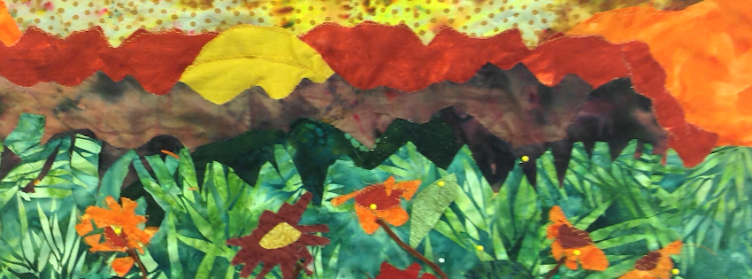.JPG) But now, I want to answer some of the questions I have gotten about a good camera that is not too expensive. I am not a camera expert, but I can tell you what I like.
But now, I want to answer some of the questions I have gotten about a good camera that is not too expensive. I am not a camera expert, but I can tell you what I like.I used to have a full manual camera. It was a Canon AE-1; the workhorse of the camera world. The array of huge lenses complimented any picture I could see through the view finder. But it was clunky huge to take along on vacations. for nearly 20 years, I saw many places through the eyes of that camera.
I bought my first digital about 10 years ago. For the next year I lugged two cameras everywhere because I didn't think I could get as good a picture with a mere digital. I had two pictures of everything. Then one day I dropped my AE-1 and light seeped through the body. It still sits in my closet, lonely and desperate. And I have gone though three digitals.
With digitals you can take huge amounts of photos, delete what you don't want. I did this with my AE-1 but the film and processing costs were astronomical. And you really could not tell what the picture was going to look like prior to processing. Digitals are virtually free unless you print; and you can print only what you want after you have cleaned it up! Or added effects even.
My first digital was a small Canon. I outgrew that camea and gave it to Carrie. She lost it.
My second digital was a Nikkon. I gave it to Carrie when she left for a 6 week European backpacking trip after college and the minute she got off the plane in Spain gypsies slashed her pants pocket and she lost the camera. Or so the story goes.
My third digital was the Olympus. It was in the carry on bag when I got on a cruise ship and the glass in the back got busted. An odd happening, but I needed a camera and bought one from the ship when we were at sea. I got a fabulous deal on a better camera. It was a Sony and it would sync with our Sony TV. That was the one that just died.
Now I take pictures every day. And on vacation I take maybe 1000 pictures. The cameras go with me everywhere and get jostled and sometimes handled roughly. So I can't complain about how long they last, well, I can if Carrie loses them........but that is another story.
My advice is to get the best camera you can for the money you wnat to spend.
I look for the megapixels - this one has 18. The last one had 14.2. That means your picture has more "dots" and gives you more clarity. If you go 10 or above you will get a nice picture. However in the link the picture there was taken with 1.4 megapixels. I'd still go for about 10 or above.
I also look for zoom focus - this one is a 20X. THe last one was 10X. I crave the longer zoom lens. But if you are only going to do family stuff and not so much landscapes, you can go for a lower zoom. I need to take a couple of zoom pictures for you today and let you see the differences in the longer zoom.
I want to make sure I can carry the camera in my pocket or tote and not lose it or get tired of carrying it, or not have it when I want that special picture. So size matters!
The next thing I think about is money and quality. Well, actually is it the first but the other things are important too. If you buy a Nikon, Canon, Sony or Ricoh, you cannot go wrong. If you get a bad one it is a fluke and they should accept the exchange. These are all good solid camera companies, like Toyota and Honda are to cars. Quality, workmanship, sturdiness, ease of use, all are found in any of these. In fact, I consider them interchangeable
Money, figure out how much money you want to spend, and head to the store. There are a ton of other features but they are all fluff, add to the price and make the camera heavier. Some are good or fun things to have. Like the panoramic feature that lets you take a wide wide angle shot. Or the movie feature, where you can actually take movies as well as still shots. Both my Sonys had these and they were fun. I rarely used the movie and occasionally the panoramic feature.
Some cameras put words on the shot, but I can do that in my software (you can too, you just may not know it). And some auto correct light/dark/exposure/shaky hands. Just decide what you like and choose from there.
Here is are some wonderful sites that compare cameras side by side:
http://snapsort.com/
http://www.letsgodigital.org/en/camera/specification/compare.html
I hope this has helped. I can get more technical but, really, this is what you need to consider when you look for a camera to play with on a daily basis.
Once you do find one you like, take a photography course from your local college, camera club or library. It will be the best thing you ever did!
glen

Good information, thank you. A whole new world awaits, I just need to set aside the time to learn it.
ReplyDelete